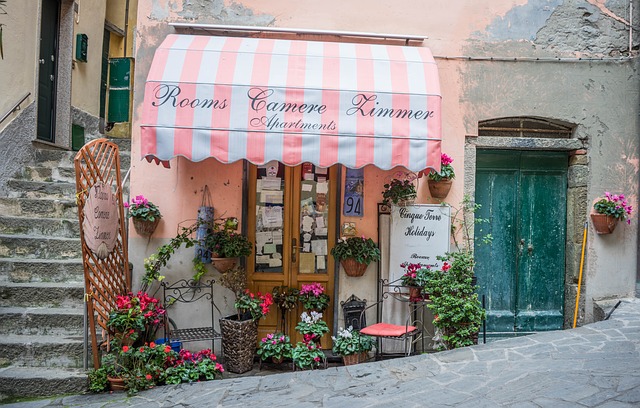Retractable awnings vs fixed awnings
Contents |
[edit] Introduction
Awnings can provide a way to protect properties from sun damage and provide a safe space protected from the heat of solar radiation and harmful UV rays. However, with a range of designs and styles on the market, it can be difficult to know which option is best.
This article outlines the difference between the two most popular choices – retractable awnings and fixed awnings.
[edit] Retractable awnings
One of the most popular options on the market, retractable awnings are able to open and retract as required, allowing them to cover a window, an al fresco area, an exposed facade and so on.
Many people choose this style due to its flexibility, as it can change position with the season, the occasion, or the time of day. For example, if it is a mild autumn day, you may find you’re not in need of any form of coverage, or if it’s a sunny summer afternoon, you may want a shady place to entertain outdoors and extend your retractable awnings accordingly.
Made from a durable fabric, purchasers can generally choose between acrylic, canvas or mesh, depending on their needs. There are also options to consider when it comes to opening and closing. A crank is less expensive, whilst motorisation allows push-button operation.
[edit] Fixed awnings
Unlike their retractable counterparts, fixed awnings are designed to be installed exactly where they are needed, providing permanent cover in one place. These can be a good choice for those who want awnings to become part of the building itself.
Frequently used by businesses as they can be used to incorporate signage, such as the name and contact details of the establishment, fixed awnings have recently become popular in homes too, offering an affordable option for those sticking to a tight budget.
However, rather than covering an al fresco area, they are primarily used for shading windows, increasing privacy and blocking out the sun and glare. Depending requirements, it is possible to choose a blockout style, which stops light from penetrating at all, or a more translucent option, which simply filters light to a more comfortable level.
When choosing fixed awnings, it is important to look for a fabric and a frame that can stand up to the elements, as they can’t be retracted during poor weather conditions. Check for a fabric that is UV and mould resistant.
[edit] Related articles on Designing Buildings Wiki
- Anticlastic.
- Architectural fabrics.
- Carbon fibre.
- Catenary.
- ETFE.
- Fabric structures.
- Inflatable building.
- Natural fibre reinforced polymers (NFRPs) in the construction industry IP 14 14.
- Nylon.
- Plastic.
- Polyvinyl chloride PVC.
- Tensile structures.
- Thermal behaviour of architectural fabric structures.
- The history of fabric structures.
- The development of structural membranes.
- The thermal behaviour of spaces enclosed by fabric membranes.
- The structural behaviour of architectural fabric structures.
- Types of building.
- Types of roof.
Featured articles and news
Retired firefighter cycles world to raise Grenfell funds
Leaving on 14 June 2025 Stephen will raise money for youth and schools through the Grenfell Foundation.
Key points for construction at a glance with industry reactions.
Functionality, visibility and sustainability
The simpler approach to specification.
Architects, architecture, buildings, and inspiration in film
The close ties between makers and the movies, with our long list of suggested viewing.
SELECT three-point plan for action issued to MSPs
Call for Scottish regulation, green skills and recognition of electrotechnical industry as part of a manifesto for Scottish Parliamentary elections.
UCEM becomes the University of the Built Environment
Major milestone in its 106-year history, follows recent merger with London School of Architecture (LSE).
Professional practical experience for Architects in training
The long process to transform the nature of education and professional practical experience in the Architecture profession following recent reports.
A people-first approach to retrofit
Moving away from the destructive paradigm of fabric-first.
International Electrician Day, 10 June 2025
Celebrating the role of electrical engineers from André-Marie Amperè, today and for the future.
New guide for clients launched at Houses of Parliament
'There has never been a more important time for clients to step up and ...ask the right questions'
The impact of recycled slate tiles
Innovation across the decades.
EPC changes for existing buildings
Changes and their context as the new RdSAP methodology comes into use from 15 June.
Skills England publishes Sector skills needs assessments
Priority areas relating to the built environment highlighted and described in brief.
BSRIA HVAC Market Watch - May 2025 Edition
Heat Pump Market Outlook: Policy, Performance & Refrigerant Trends for 2025–2028.
Committing to EDI in construction with CIOB
Built Environment professional bodies deepen commitment to EDI with two new signatories: CIAT and CICES.
Government Grenfell progress report at a glance
Line by line recomendation overview, with links to more details.
An engaging and lively review of his professional life.
Sustainable heating for listed buildings
A problem that needs to be approached intelligently.
50th Golden anniversary ECA Edmundson apprentice award
Deadline for entries has been extended to Friday 27 June, so don't miss out!
CIAT at the London Festival of Architecture
Designing for Everyone: Breaking Barriers in Inclusive Architecture.
Mixed reactions to apprenticeship and skills reform 2025
A 'welcome shift' for some and a 'backwards step' for others.




























